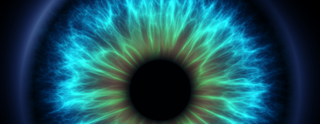Atsena’s XLRS Gene Therapy Shows Efficacy in Phase 1/2 Clinical Trial
Eye On the Cure Research News
The XLRS gene therapy was well tolerated and resolved damaging schisis cavities in patients receiving the lowest dose.
Atsena Therapeutics, a company developing innovative gene therapies for inherited retinal diseases, has reported both structural and functional vision improvements for patients receiving the low dose of the company’s X-linked retinoschisis (XLRS) gene therapy in its LIGHTHOUSE Phase 1/2 clinical trial. Known as ATSN-201, the emerging treatment was well tolerated for all three patients in the low-dose group. The company is currently dosing patients in the mid-dose group. LIGHTHOUSE is enrolling males with XLRS who are six years of age and older.
Atsena’s emerging XLRS gene therapy is injected subretinally (underneath the retina). The company says this approach gets the treatment more effectively to the area of the retina where the treatment is needed — i.e., near the damaging, schisis cavities in the central retina caused by the splitting of retinal layers in people with XLRS. ATSN-201 uses a specially designed adeno-associated viral delivery system (AAV.SPR) which laterally spreads across a larger area of retina than other AAV systems. The AAV.SPR can reach the fragile fovea — the tiny pit in the central retina responsible for visual acuity — with an injection outside of the foveal region.
Two of three patients in the low-dose group of LIGHTHOUSE had significant resolution of the schisis cavities. Schisis resolution was observed through 24 weeks after ATSN-201 was administered. The schisis resolution occurred inside and well outside of the injection site, affirming ATSN-201’s ability to spread broadly across the retina.
Efficacy of ATSN-201 was measured using microperimetry, which captures retinal sensitivity at different locations (loci) in the retina. Changes in retinal sensitivity are measured in decibels (dB). Improvements of up to 14 dB were seen in one patient, with improvement of greater than 7 dB at 38 loci. The U.S. Food and Drug Administration considers an improvement of at least 7 dB at 5 or more prespecified loci to be clinically meaningful.
The RD Fund, the Foundation’s venture philanthropy fund for advancing emerging treatments into and through early-stage clinical trials, is a founding investor in Atsena.
“The early report from the LIGHTHOUSE trial is truly encouraging and represents a milestone in XLRS gene therapy clinical development,” says Rusty Kelley, PhD, managing director, RD Fund. “ATSN-201 for the first time enabled subretinal delivery of meaningful levels of the therapeutic gene safely outside areas of schisis in the central retina. The resolution of the schisis cavities coupled with functional improvements in vision are very meaningful, and we look forward to additional results as the trial moves forward.”
XLRS is caused by mutations in the gene RS1 which expresses a protein called retinoschisin — a protein that plays a critical role in the maintenance of the retinal structure and cell-to-cell adhesion. As an X-linked condition, XLRS usually affects males with females as unaffected carriers. XLRS is usually diagnosed in boys before the age of 10. Approximately 30,000 people in the US and EU are affected by XLRS.
Atsena previously reported vision improvements for patients in a Phase 1/2 gene therapy clinical trial for Leber congenital amaurosis 1 (LCA1) which is caused by GUCY2D mutations. The company also has a dual-vector gene therapy in preclinical development for Usher syndrome 1B, which is caused by MYO7A mutations.
Atsena Founder and Chief Scientific Officer Shannon Boye, PhD, University of Florida, is the preclinical developer for the company’s emerging gene therapies.





